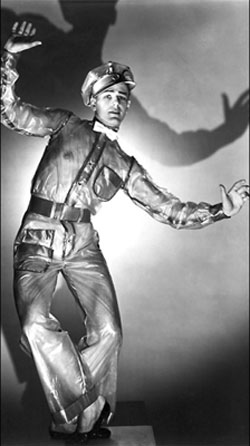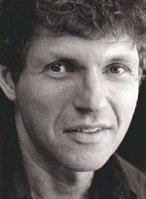Amazingly enough, there’s still some people who have never been to New York City…and until yesterday, I could count myself as a member of that group. This weekend, however, I finally got an opportunity to leave my post in Western NY and fly down to NYC, ostensibly to attend a NYSSMA Composition Committee meeting, but also to finally see what all the noise about the music scene was about. Lucky for me, this was a good weekend for concerts – I was able to catch two top-notch ones in the span of less than 24 hours.
I’ve been reading a lot of good reports on the Brooklyn Philharmonic and the work that Michael Christie has done since he took over after Robert Spano left three years ago, and after Saturday night I can now see why. He took the audience in the Howard Gilman Opera House at the Brooklyn Academy of Music through a pretty wild ride, one that traversed almost 200 years in history but was connected through the overall concept of color and narrative.
The first half consisted of John Corigliano’s Pied Piper Fantasy that featured a wonderful performance by flutist Alexa Still (imagine not only memorizing a 40-min. concerto but also having to move and act throughout the entire auditorium while you’re doing it!) as well as a very inventive staging by David Herskovits which included multitudes of actor-rats (complete with LED eyes) and throngs of costumed children – all of whom were also playing flutes and drums and playing by memory. The logistics alone – not to mention the actual performance aspects, which were many – must have been mindboggling and it’s to Christie’s credit that he took the risk to perform the work in such a way. The performance was passionate and nuanced and the visual aspects of the acting and lighting design added a extremely visceral layer to the work that the composer himself had not imagined when he wrote it.
The second half was taken up with Symphonie Fantastique; while it was a satisfying performance, it seemed to slightly suffer from balance issues, including the audio enhancement microphones that, I’m assuming, were put up to compensate for the acoustics onstage. By contrasting two masters of orchestration and story-telling – John Corigliano and Hector Berlioz – Christie impressed me with his programming skills; Berlioz was the first composer to really let the orchestration genie out of the bottle and no one in the past 25 years is more expert in evoking the color variations within the orchestra than Corigliano. My only regret was that I had to miss the post-concert concert in the BAM Cafe that featured Nico Muhly, Jefferson Friedman and Mason Bates…I had already made dinner plans with the tubist and principal trumpeter with the Brooklyn Phil (Ray Stewart and Wayne Dumaine) and who am I to turn down dinner with brass players like that?
Today’s concert was equally enjoyable, with a star-studded audience to boot. My luck was still with me as I was able to get up to Manhattan and the Tenri Cultural Institute to check out Robert Paterson’s American Modern Ensemble. Entitled 1938, the program took the unique concept of featuring six works by six world-class American composers, all of whom happened to be born in 1938 (and, of course, all will be celebrating their 70th birthday this year). Not only did AME program works by Corigliano, Joan Tower, Paul Chihara, Charles Wuorinen, John Harbison and William Bolcom, but they were adept enough to secure everyone but Bolcom to attend one of their two concerts on Sunday. Needless to say, it was an enjoyable people-watching session with Corigliano, Tower, Chihara and Wuorinen were idly chatting with each other along with Steven Stucky…I noticed several other composers including Derek Bermel and Dalit Warshaw as well…point being is that it was interesting for someone who has never been to a NYC concert to see so many well-known composers at just one relatively intimate chamber concert.
Paterson has put together a damn fine group of performers, with kudos going to cellists Robert Burkhart and Eric Jacobsen, harpist Jacqueline Kerrod, baritone Robert Gardner and serious, serious props going to Stephen Gosling and Blair McMillen, two pianists who have already gotten a lot of press and deservedly so – their performance of Corigliano’s Chiaroscurro was playful, intelligent, and so very…right. The works included Tower’s In Memory for string quartet, Wuorinen’s An Orbicle of Jasp for cello and piano, Chihara’s Elegy for violin, cello and piano, Bolcom’s Celestial Dinner Music for flute and harp in the first half and Corigliano’s Chiaroscurro for two pianos (one tuned a quarter-step flat) and John Harbison’s Words from “Paterson” for baritone and chamber ensemble filling out the second half. While all the works were performed at an very high level of maturity and subtlety, the second half seemed to feel a bit more comfortable and at ease…the intimacy of the Tenri Institute cut both ways, with some very soft parts in the first half sounding tentative (though in a larger, more forgiving room with more space between the audience and the ensembles I’m sure that wouldn’t be the case).
The interviews after intermission with Corigliano, Tower and Chihara were quite informative and entertaining, as all three listed their own ideas of what drastic changes over their lifetime have affected the industry (Corigliano mentioned the internet while both Tower and Chihara agreed that the freedom that composers now feel in regards to style) and their own writing (Tower listed living in South America and being married to a jazz musician, Corigliano explained how the AIDS crisis affected him and Chihara gave several ideas, including the Vietnam War and his own coming-to-terms with his life history).
Ultimately the entire concert was extremely successful and the folks at AME should be very proud of what they accomplished. As for my trip to NYC…something tells me it won’t be my last.
 Growing up in a podunk, nil-culture, border-ish town in Washington State, half of my classical education came by way of drifty, static-filled, late-night AM listening to the CBC. Not only work by Stravinsky, Boulez, and Xenakis, but a whole raft of amazingly strong Canadian composers: R. Murray Schafer, John Rea, Claude Vivier and the like. Many of these recordings were CBC productions, and were something that gave me an early admiration of our northern neighbor’s commitment to the arts.
Growing up in a podunk, nil-culture, border-ish town in Washington State, half of my classical education came by way of drifty, static-filled, late-night AM listening to the CBC. Not only work by Stravinsky, Boulez, and Xenakis, but a whole raft of amazingly strong Canadian composers: R. Murray Schafer, John Rea, Claude Vivier and the like. Many of these recordings were CBC productions, and were something that gave me an early admiration of our northern neighbor’s commitment to the arts. Dance is always about music, and music is, more often than not, about dance. But how does dance animate music, and music animate dance? This seemed to be the central question when I caught Program 1 of the San Francisco Ballet’s 75th anniversary season at the War Memorial Opera House February 9th. Classical ballet and modern dance sometimes plays against and even ignores the music’s rhythmic structure which would never happen in the deservedly popular Dancing With The Stars. But we rightly or wrongly cut the highbrow forms a bit more slack.
Dance is always about music, and music is, more often than not, about dance. But how does dance animate music, and music animate dance? This seemed to be the central question when I caught Program 1 of the San Francisco Ballet’s 75th anniversary season at the War Memorial Opera House February 9th. Classical ballet and modern dance sometimes plays against and even ignores the music’s rhythmic structure which would never happen in the deservedly popular Dancing With The Stars. But we rightly or wrongly cut the highbrow forms a bit more slack.  The composer Jorge Liderman
The composer Jorge Liderman